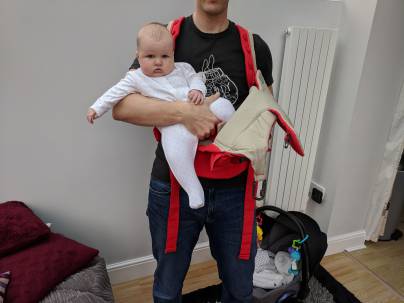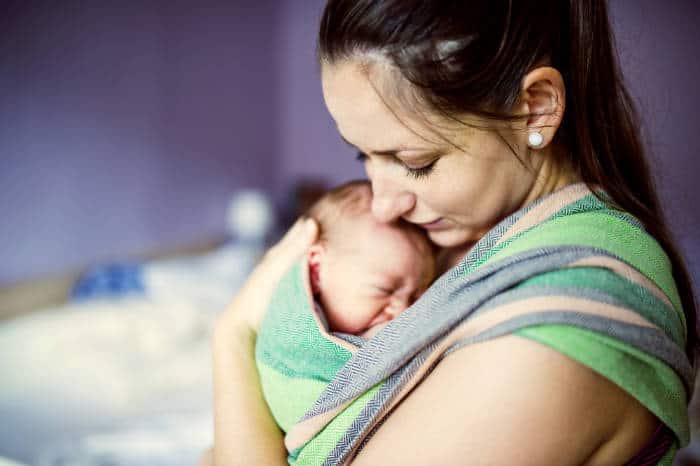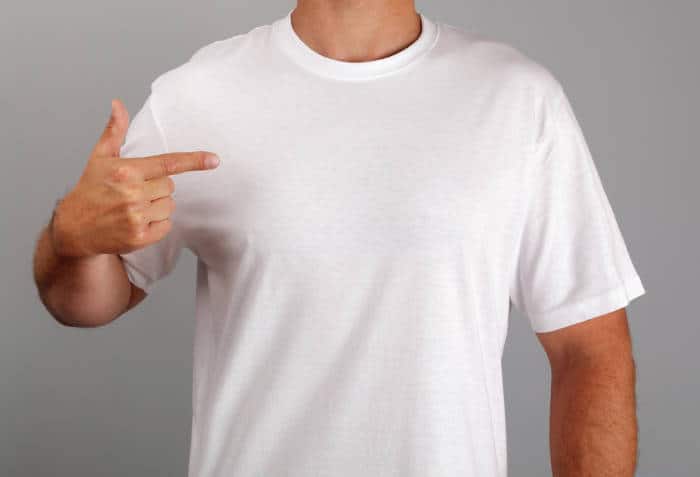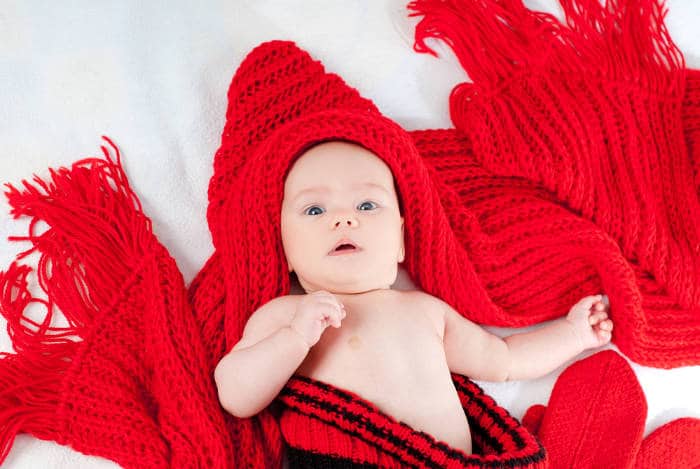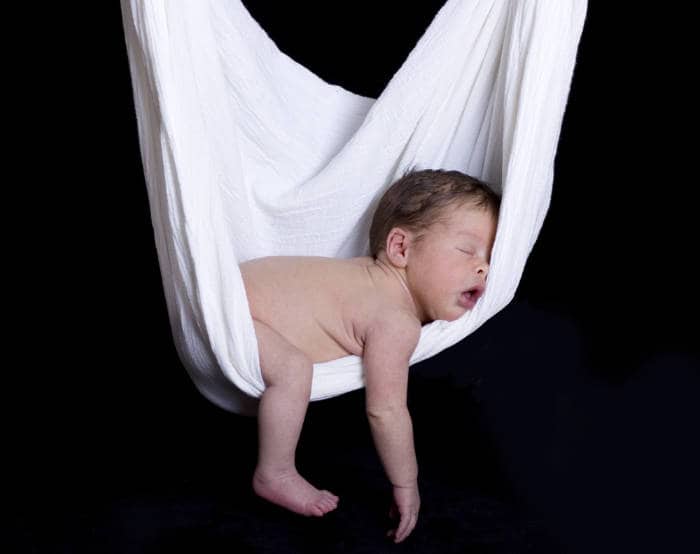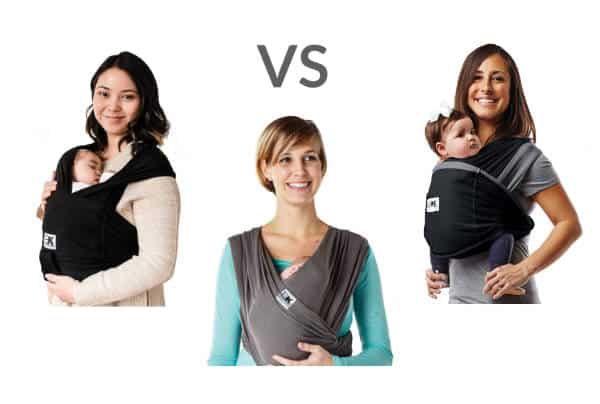Oh the places you (and your baby) will go! And go you will, because babywearing allows you to step foot into those crevices of this world, that have remained untarnished by strollers that have proven to be so near and dear to us. From hikes in the mountains, to trips to your local zoo. From crowded and narrow-road farmers markets, to walks along the shore, baby carriers are a great way to keep your child close, secure, and happy.
For those that aren’t too familiar babywearing, we get it. Even though it has been practiced for centuries throughout the globe, the western world had turned away from wearing babies for decades. Fortunately, there has been a new wave of enthusiasm over the practice here in the west. But there may still be mothers and parents who have never utilized it.
If you’ve been curious about babywearing, let us give you that extra nudge to try it out.
And hey, it’s not because we’re show-offs, but we’ve got not one, not two, but fifteen reasons why babywearing could be your next favorite thing.
So get out your wraps, your soft-structures, or your ring slings and go to town – literally – with your little one because we’ve got some amazing benefits of babywearing to share that you’ll be glad you stuck around for!
Table of Contents
The Benefits of Babywearing – Infographic!
Share this infographic on YOUR site…
Just copy and paste the code below in the box below into the HTML of your page to show this infographic on your site with the correct attribution! You’re welcome!
You’ll have a happy baby
This is perhaps our favorite benefit. A worn baby, is very, very likely to be a happy baby. Happy babies don’t necessarily come from being worn in a carrier, but they develop from constant comfort, touch, connection, and interaction from their caregivers – happy babies are those that have their needs met safely, and in a timely manner.
And when you’re wearing your baby, no matter how “hands-off” it is, it is almost impossible not to stroke her chin, caress her tiny body, and run your fingers through her soft, wispy hair.
Your baby is showered by your constant touch, smell, and sight; and that is what newborns love the most. While babywearing, you’re able to pick up on baby’s cues much faster – when diapers need to be changed, when they’re hungry, when they’re sleepy, etc. This allows you to satisfy their needs quicker, and if that doesn’t make a baby happy, we don’t know what will.
In fact, in a 1986 study concluded that increased carrying throughout the day significantly reduced crying in an infant (Hunziker Ua, Barr RG, 1986). The study showed that carrying a baby reduced crying by a whopping 43%. Oh, did you just hear your baby cry? Go grab that carrier and put it to use! Don’t walk. Run.

Helps with Flat Head Syndrome and Muscle Development
Did you know that babywearing can actually help prevent (or even reverse) flat head spots on your baby’s head?
“Flat head syndrome” (plagiocephaly) is becoming more common today due to the amount of time that babies spend sleeping on their backs or in “containers” such as car seats, swings, or bouncy chairs.
Babywearing a great way to minimize the amount of time that your baby spends laying on his back. When you wear your baby, it takes the pressure off the back of your baby’s head, preventing these flat spots. Not only that, but babywearing encourages the development of strong neck and shoulder muscles, similar to tummy time.
Read more about preventing plagiocephaly on Karen Kostohris (CD, CPD, CLC) website.
It’s a hands-free way of holding your baby!
Now we know newborns require constant attention from you. That can prove to be really difficult if you’ve got other children in the house to take care of. And when your newborn is crying the most, your toddlers are screaming for snacks, someone has knocked over the juice, and you are just at your wits’ end. Isn’t that how it always works?
Carrying your newborn without actually having to “hold” her can really help in these situations. You’re not juggling an entire human being while trying to reach into the refrigerator for some cheese sticks or while cleaning up a spill. In a carrier, your baby is snug, secure, and content even while you’re occupied!
And even without older kids in the house, it helps to have your hands free while carrying baby. You’ll learn quickly that after pregnancy cravings, postpartum munchies is a very real thing. So for the times you have to fix a sandwich or a snack for yourself, no need to put baby down. Just bring her along!
But besides food, babywearing is a great way to still enjoy things you’d need free hands for while including your baby. Ever heard of babywearing yoga? It’s totally a thing!
The things you can do while babywearing are infinite. These simple hobbies and tasks that often seem so daunting to new moms can easily still be done with the use of a carrier.
It promotes attachment between you and your baby
Let us paint you a picture. You go for your daily one hour walk outside with your baby. He’s content in his stroller. You talk to him, point things out to him, and try to make your walk as interesting as possible. You can’t see your baby’s reaction unless you stop and bend to see, nor can he see yours. Dogs barking, cars zooming, and police sirens while on your walk can slightly scare baby and sometimes you don’t even realize it. You both bonded a bit during that walk, and all-in-all it was a good hour spent out.
Now let’s take the same scenario but put baby in a carrier, instead of a stroller. While pointing things out to him, you both can actually interact with each other. Babies can sense your tone better by seeing you while you talk – by examining your facial expressions and having a direct view of your face. And when he hears things that can trigger anxiety or fear, you can run your hand down his back, cup his chin, and kiss his head to let him know you are there, and he is secure.
All of that is to say that in the same one hour scenario, the bond between you and your child grows stronger in the latter situation. The heightened response to baby’s needs and interaction harbors a stronger sense of security and trust; thus enhancing the overall attachment. In a study carried out to experiment the effects of carrying on attachment, it was concluded after a number of tests that increased physical contact led to more securely attached infants (Anisfield E, 1990).
It’s perfect for discreet nursing
Newborns nurse a lot. And by a lot we mean all the time. Frankly, we aren’t sure which is more descriptive. If you already babywear, you know how convenient it is to nurse your baby on the go. There is no need to take her out of the carrier. You can nurse your child in public, while still being private about it. Usually wraps have enough fabric that you can it pull it above your baby’s head to be a bit more discreet while nursing.
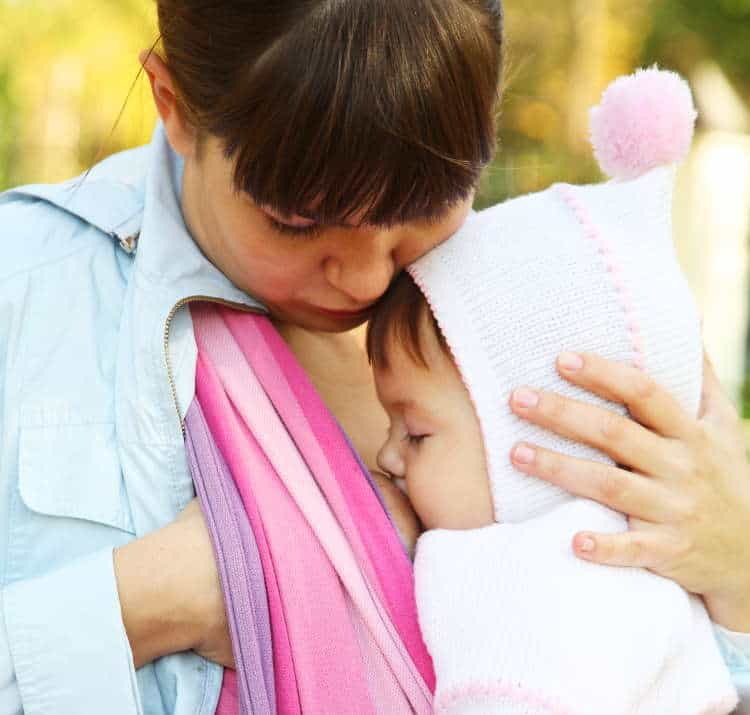
It can often improve breastfeeding for you and your baby
I know exactly what you are wondering: HOW? Remember when we mentioned hunger cues earlier? Well, let’s dig deeper. Babies innately are amazing at letting us know when they need something, especially when it’s food. If you’re already a parent you know what this looks like. Baby quickly turns her head side to side while rooting when hungry.
And if you aren’t near your baby, sometimes waiting long enough to nurse can put her in distress. You often miss out on her early hunger cues, and she anticipates that her hunger will prolong to such an extent that it becomes difficult to console her.
“Neglecting to recognize and respond to subtle feeding cues exacerbates both physiological and psychological breastfeeding challenges, yet many mothers feed on a schedule or report crying rather than early hunger cues as the primary motivation for initiating feeding.”
This bit of information was taken directly from a recent study addressing responsive feeding. The findings showed that increased mother-child contact helps pick up on early hunger cues. Using carriers could encourage better responsiveness and help meet feeding goals for mothers.
Because if you’re wearing your baby against your body, it’s very hard to miss early signs of hunger. It also consoles your baby because they can literally smell you and know that food (if you nurse) is nearby.
Builds confidence in a parent
When parents are in constant contact with their newborn, they learn to pick up on their child’s cues earlier and better, that we have established. When a child is able to let us know when they are hungry, or wet, or sleepy without having to cry, it builds trust with their parent(s). That in turn helps create confidence within the parent knowing that their child’s needs have been met.
Lightweight option for traveling
Okay, we know we’ve got some readers who are hardcore stroller advocates. Don’t worry, we love our strollers too and ideally, we’d like to take both our strollers and carriers each time we travel. There are a number of reasons why parents choose to take strollers with them out and about, but there are lots of scenarios where a carrier just makes more sense!
Traveling with a child at the airport is always much harder when you’re flying with no other adult. But babywearing makes it a bit more convenient:
- Walking babies/toddlers are notorious for getting their parents to chase around them throughout the entire airport. And sometimes, that can be dangerous. Toddlers are quick, and airports are crowded. Carriers are the perfect solution to keep your wandering toddler close and secure while navigating throughout the airport
- It’s easier to maneuver your luggage when you don’t have a stroller to push around. Much easier. Especially if you and your kiddos are flying solo.
- Although some airports might have you take your child out of the carrier during security checks, most won’t. That means if baby is sleeping, she’d stay sleeping. But take a baby out of a stroller, you’re almost guaranteed an unhappy wake-up.
Allows you to access places with your baby that you otherwise couldn’t
We’re piggy-backing off of our previous “advantage.” Sometimes, you travel to a destination that has streets and shops and other sight-seeing venues that aren’t really accessible with the use of a stroller. Think narrow roads, high-rise buildings, beaches, cobble-stone streets etc. Wearing your baby allows you to travel to these places while keeping her close and secure.
It also goes without saying that carriers offer an extra layer of security and safety when it comes to traveling to new places. Sometimes instead of letting your child walk or run right ahead of you, it’s just easier to plop them into a carrier where you know they can’t get out of your sight.
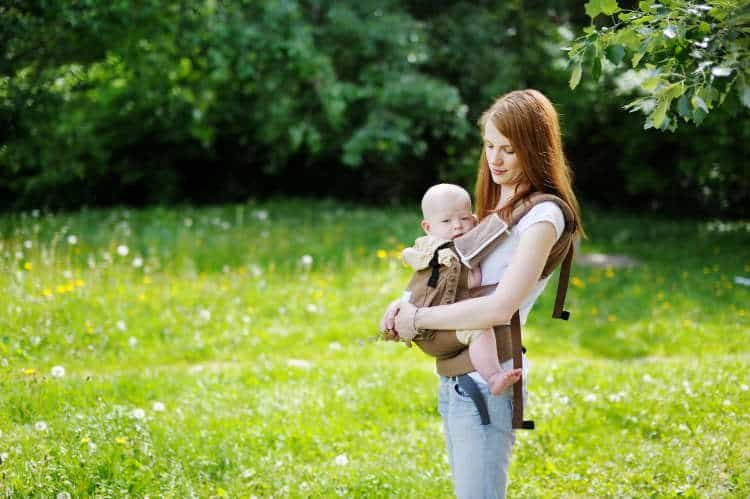
Reduces reflux
Infant reflux is quite common in newborns – especially in premature babies. It’s when food from the stomach backs up into the baby’s pipe and causes spit up. These babies often prefer to be held upright, even while sleeping. This helps keep the contents within the stomach. Babywearing can help keep a child who suffers from reflux, in that upright position without having the caregiver to plop on the couch all day.
Allows you more time to do things
Yes, carrying a baby is a thing. But it’s not the only thing that needs to be done during the day. Whether you are a stay-at-home mom or a working parent, you’ll quickly realize that although your baby is priority, other tasks need to get done. And that’s hard when baby is in your arms for the majority of the time.
Having her in a carrier however, allows you to take care of extra errands, or those few chores that absolutely must get done in the house. You can read your book, prep your dinner, vacuum the house, run to grab mail, check your email and do other work on the laptop, tidy up, and so many other things while your child is in a carrier. When they get a bit older, you can utilize other carrying positions such as the back carry which allows you to get even more done!
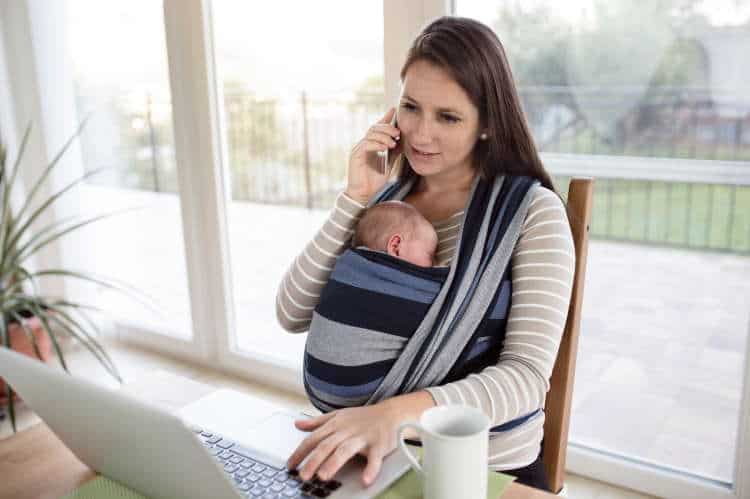
You can shop!
Okay Target loving mamas. And dads. Because Target never ever discriminates. You know exactly what we’re talking about. In a world of Amazon Prime and home-delivered groceries, there’s just something so invigorating about walking up and down the aisles and picking things out yourself. But sometimes having toddlers and babies makes it so difficult, that you do end up clicking that “$5.00 gets you delivery” button. Because toddlers almost guarantee 3 meltdowns per shopping trip. We’re almost certain there’s a study out on that. Okay, we digress.
Sometimes you just want to physically walk into a store. And carriers of all kinds lets you do that. Babies (and toddlers) are almost always more calm and happy in a carrier and you’d be surprised how long they can hold up in one. So go ahead and buy that weighted blanket and throw in 2 (or 5) pints of chocolate chip cookie dough ice cream. No judgement here!
People are less inclined to touch your baby
We’re not sure why in 2019 people have to say “Please don’t touch my baby.” But they totally do! And sometimes, that still doesn’t work! We know babies are irresistibly cute and there should definitely be some sort of annual “de-stress with babies” event. But that’s a whole other topic for a different day.
Unfortunately, people will try to touch your baby. Even strangers. Even if you’ve got a cute sign hanging from the car seat that basically says “please don’t touch.” And with each kiss, hug, and touch, there is an increased potential for viruses; especially during flu season.
But when your baby is in a carrier, snuggled against your body instead of in a stroller or car seat, people tend to refrain from touching. We’re speaking from experience here. Your baby is usually in a carrier facing you with most of her body tucked into the fabric. Less of baby to see = less chances of her being touched. It also helps that having to touch a baby in a carrier would require someone to get into your personal space – and that’s much more uncomfortable than reaching into a stroller.
It helps with social and cognitive development
Babies who are worn are usually able to hear and see what their parents hear and see. Sometimes, they can even feel what the parents feel. They have a direct view of what you’re doing and are likely to be involved in more of your activities throughout the day. This enhances their social skills and overall cognitive abilities.
Because they are more intimately participating in things that otherwise they wouldn’t be able to while lying down or in other baby gear (i.e. swings, rockers, etc.), they are exposed to more environmental stimuli. This not only engages a baby, but allows her brain to store plenty of experiences that will help to make connections later in life.
It can reduce the symptoms of Postpartum Depression
The birth of a baby comes with so many emotions – including those of fear, anxiety, and oftentimes sadness. Many new moms suffer from the baby blues and when PPD goes untreated, depressive symptoms can escalate.
Studies show that skin-to-skin contact decreases postpartum depressive symptoms, especially in the first three months (sometimes referred to as the fourth trimester). Skin-to-skin has many benefits in itself. This is why you’ll notice doctors put baby on the mother’s chest right after birth. This helps regulate a baby’s temperature, stabilize her heart and breathing rates, and reduce her crying among many, many things.
Skin-to-skin contact (SSC) also offers many benefits to the mother: it helps initiate breastfeeding, enhances communication between mom and baby, and encourages a healthy bond between the two. It’s no surprise then that prolonged skin-to-skin helps create a more confident parent that is more in tune with their child. These factors, in turn, help decrease some of PPD symptoms.
In a 2012 study which examined the effect of skin-to-skin contact between a mother and her infant on postpartum depressive symptoms, it was concluded that this action greatly benefited mothers by reducing both depressive symptoms and physiological stress. These mothers were assigned 5 hours of skin-to-skin contact with their babies daily and by the end of the study scored on the lower end of the depressive scales.
Babywearing is just a simple and hands-off way of achieving skin-to-skin contact. It also makes it easy to provide your child with that kind of contact for 5 hours or more since that time can also be spent doing other things.
Allows other caregivers to build a bond with baby
Babywearing isn’t just for moms. In fact, carriers are the perfect gear to allow other caregivers to get close and cuddly with a baby. When a baby is breastfed, especially, it seems that she only wants her mother. And naturally, she gets the most SSC with her mother too.
Having dad, or even grandparents, tote the baby around in a wrap, or other style of carrier, greatly increases the amount of SSC with that caregiver and eventually creates a stronger bond with them. Remember that whole bit about increased SSC = increased bond? Yup, that works with other caregivers too.
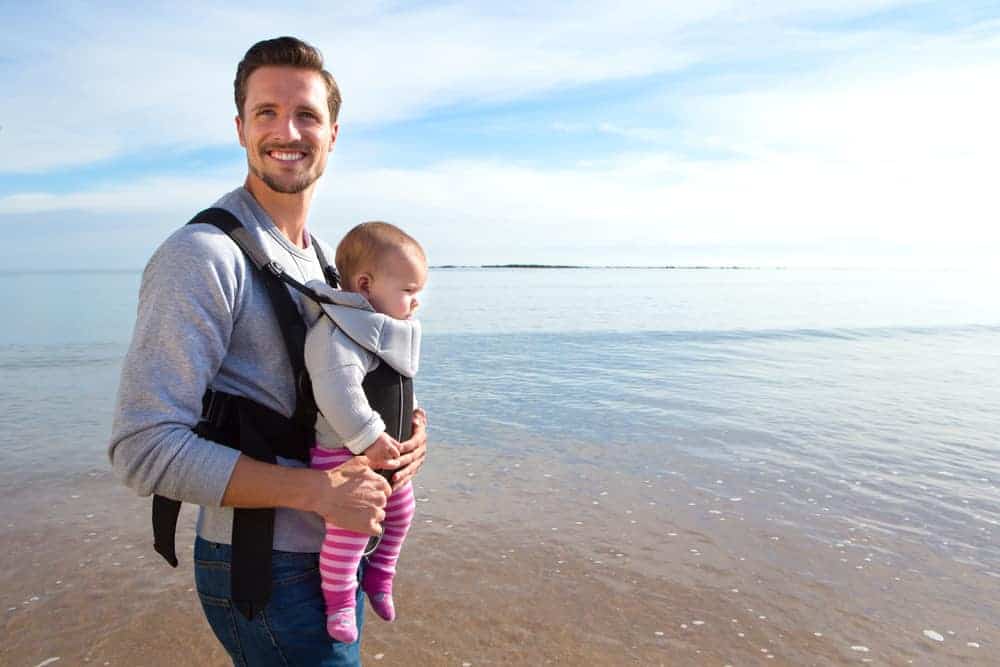
This can further benefit the mother too. She gets some time to herself while knowing her baby is happy and content in the arms (and fabric) of another caretaker. And because we’re all about bringing things full circle around here, having some time to themselves greatly helps mothers who suffer from PPD. Self-care is the most important care, and when baby is with her mom 100% of the time, unfortunately, it’s one of the things that gets neglected first.
So grab that ring sling, or wrap, or whichever carrier is used in your home dads, and grandparents, and uncles and aunts! We promise you’ll love it just as much as the brand new baby in your life does!



